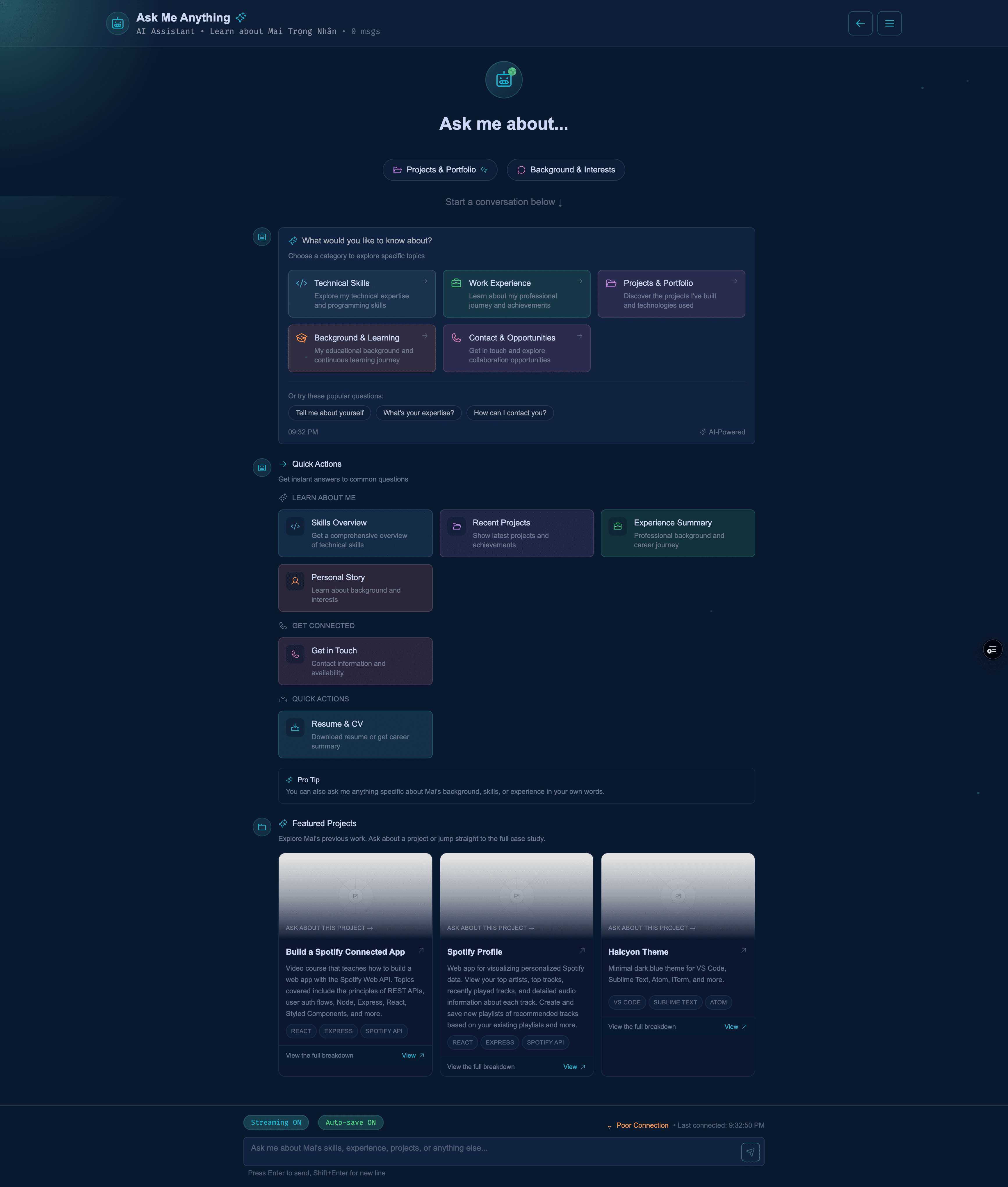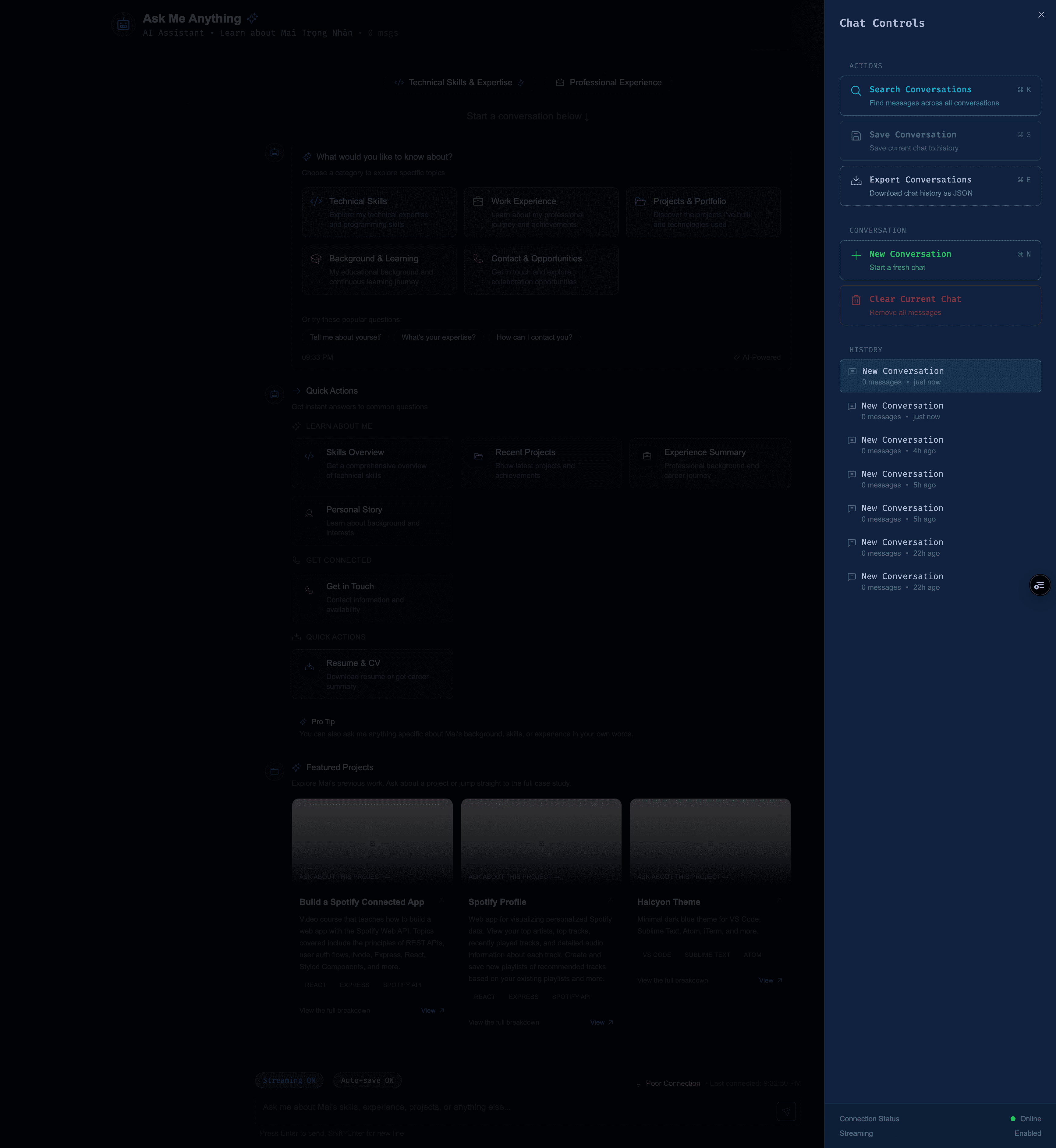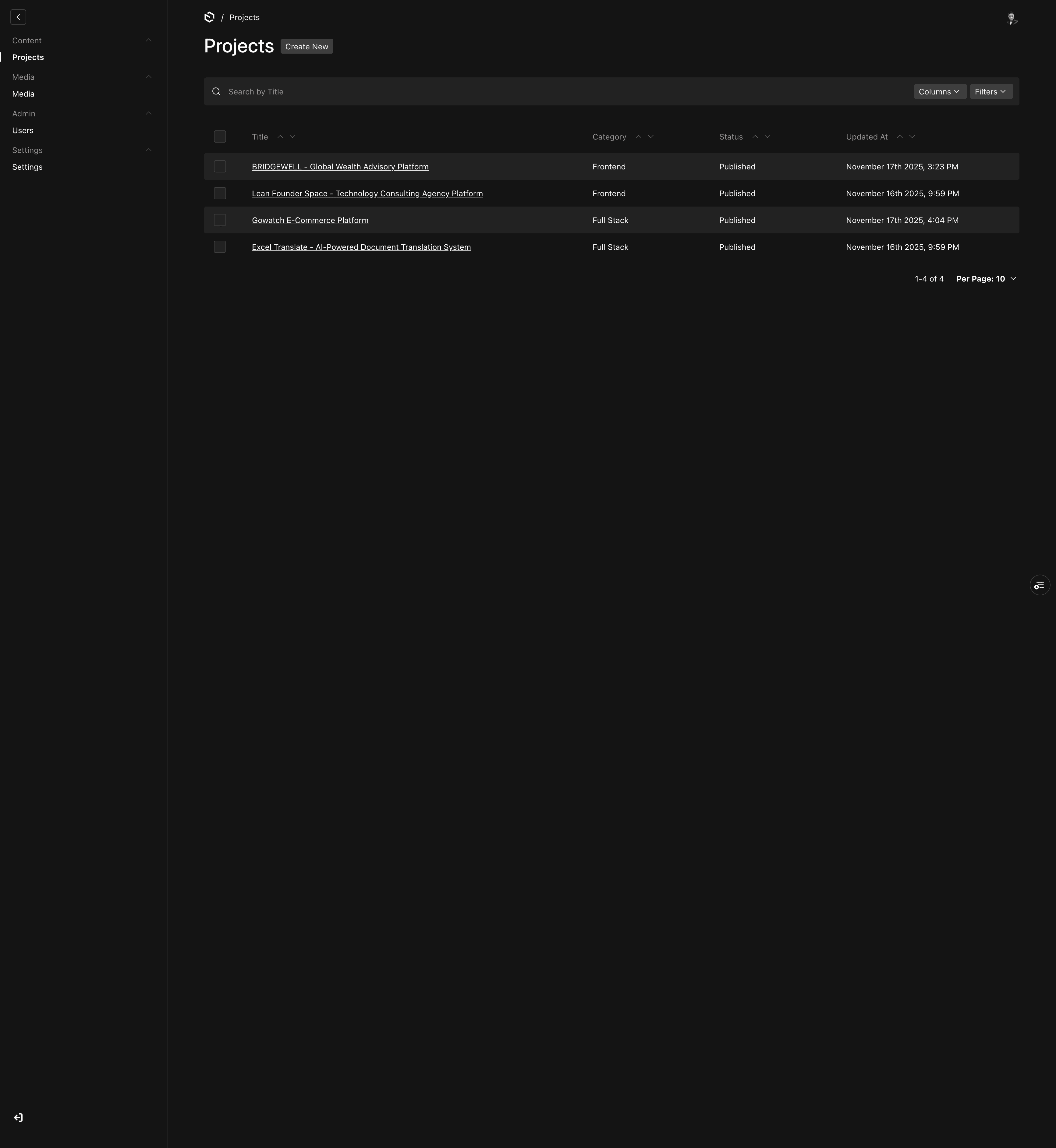Portfolio
Overview
AI-Powered Portfolio Platform | Full-Stack Developer (Solo)
An intelligent portfolio website featuring a RAG-powered AI chatbot that enables interviewers and recruiters to instantly discover professional information through natural conversation. Built with Next.js and React, the platform leverages OpenAI SDK and Qdrant Vector Database to deliver accurate, context-aware responses about experience, projects, education, and contact details - eliminating the need for recruiters to manually search through resumes or portfolio pages.
The platform's core innovation is its RAG (Retrieval-Augmented Generation) system that embeds professional information into a vector database, ensuring the AI assistant provides factually accurate responses grounded in real data rather than hallucinations. This guarantees that when recruiters ask "What experience does this candidate have with React?" or "Tell me about their recent projects," they receive precise, verified information directly from the source material.
Built as a comprehensive full-stack solution, the project demonstrates expertise in modern web development, AI integration, vector database management, and production deployment - showcasing the ability to architect intelligent systems that solve real-world user experience challenges.




Key Features
- •RAG-powered AI chatbot for instant information retrieval via natural language queries
- •Qdrant vector database integration for semantic search and accurate knowledge retrieval
- •Guardrails system preventing AI hallucinations with response validation
- •PayloadCMS headless CMS for dynamic content management without code deployments
- •Telegram bot integration for real-time contact form notifications
- •Automated embedding pipeline that syncs new content to vector database
- •Responsive UI built with Tailwind CSS and ShadCN component library
- •PostgreSQL database (Vercel) for structured data persistence
- •Modern Next.js architecture with server-side rendering and API routes
- •Professional design optimized for recruiter/interviewer experience
Challenges
Traditional portfolio websites present several critical user experience and information discovery challenges that make them frustrating for busy recruiters and hiring managers:
Information Discovery Friction: Recruiters reviewing dozens of candidates daily don't have time to navigate through multiple pages, read lengthy project descriptions, or search for specific skills - they need instant answers to targeted questions like "Does this candidate have AWS experience?" or "What's their most recent full-stack project?" Traditional portfolios force manual scanning and create unnecessary friction in the hiring process.
Static Content Limitations: Most portfolio websites are static showcases that can't answer follow-up questions or provide clarification - if a recruiter wants to know "Why did you choose PostgreSQL over MongoDB for this project?" they have to schedule an interview or send an email. This back-and-forth delays decision-making and reduces engagement.
Resume Parsing Inefficiency: Recruiters waste time parsing PDFs, navigating confusing layouts, and cross-referencing multiple documents to build a complete picture of a candidate - there's no intelligent system that understands their intent and surfaces exactly what they need.
Outdated Content Problem: Updating portfolio content typically requires code changes, redeployment, and technical overhead, this causes developers to leave portfolios outdated, showing stale information that doesn't reflect their current skills or recent projects.
Missed Opportunities: When potential clients or companies fill out contact forms, there's often a delay in response time because developers don't receive immediate notifications - leading to lost opportunities when prospects move on to other candidates.
Solutions
RAG-Powered AI Chatbot - Core Innovation
Semantic Knowledge Retrieval: Implemented a Retrieval-Augmented Generation (RAG) architecture that chunks professional information (resume, projects, education, skills) into semantic segments, generates embeddings using OpenAI's embedding models, and stores them in Qdrant vector database for efficient similarity search.
Intelligent Query Processing: When users ask questions, the system:
- Converts the query into an embedding vector
- Performs semantic search in Qdrant to retrieve the most relevant knowledge chunks
- Injects retrieved context into OpenAI's prompt for grounded response generation
- Returns factually accurate answers based on real portfolio data
Hallucination Prevention System: Built guardrails that validate AI responses against source material—the system cross-references generated answers with retrieved chunks to ensure accuracy, rejecting responses that can't be verified from the knowledge base. This guarantees interviewers receive truthful information rather than AI fabrications.
Context-Aware Conversations: Designed the chatbot to understand follow-up questions and maintain conversation context, enabling natural dialogue like:
"Tell me about your React experience" → "What projects used React?" → "Show me the most complex one"
Dynamic Content Management Architecture
Headless CMS Integration: Implemented PayloadCMS as the content management layer, allowing portfolio updates (new projects, skill additions, experience updates) through an intuitive admin panel without touching code or triggering redeployments.
Automated Embedding Pipeline: Created a seeding script that:
- Monitors PayloadCMS for content changes
- Automatically chunks new content into semantic segments
- Generates embeddings via OpenAI API
- Syncs updated vectors to Qdrant database
- Ensures the AI chatbot always has current information
Structured Data Layer: Used PostgreSQL (Vercel Postgres) as the primary database for structured content storage, maintaining relationships between projects, skills, experiences, and contact submissions while keeping content easily queryable for both the CMS and AI system.
Real-Time Notification System
Telegram Bot Integration: Built a Telegram bot notification service that sends instant alerts when potential employers or clients submit contact forms—enabling immediate follow-up and eliminating the risk of missing opportunities due to delayed email checking.
Form Submission Pipeline: Designed an API endpoint that captures contact form data, stores it in PostgreSQL, and triggers Telegram notifications with all relevant information (name, email, message content), allowing for rapid response to inquiries.